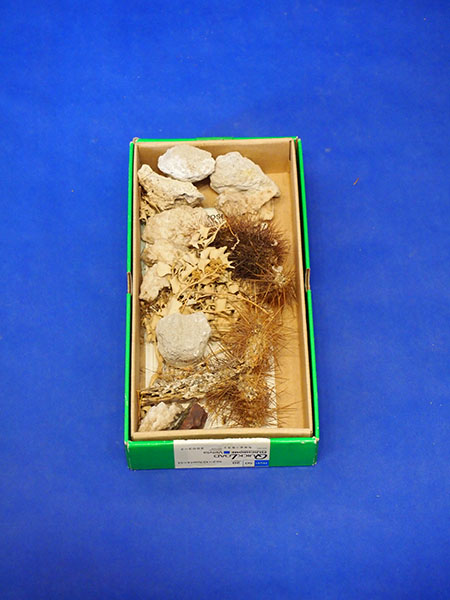![]() body | color | collections | commodity | cube | document | fabric | fetish | gender | glass | home | identity | living | machine | metal | minimal | mobility | narrative | olfactory | organic |
body | color | collections | commodity | cube | document | fabric | fetish | gender | glass | home | identity | living | machine | metal | minimal | mobility | narrative | olfactory | organic |
![]() pain | paper | plastic | plugs | power | protective | rectangular | ritual | round | sound | souvenir | spiritual | style | text-based | time | tool | touch | uniform | value | visual | warm | wood
pain | paper | plastic | plugs | power | protective | rectangular | ritual | round | sound | souvenir | spiritual | style | text-based | time | tool | touch | uniform | value | visual | warm | wood
| Collection: Mojavi Desert 2 | |||
Narrative: Mojavi Desert collection 2 Fujifim Quickload box purchased from B&H Photo Video store on 34th Street and 9th Avenue. Contained 4x5 size sheet film (each of which is contained in a lightproof envelope). This sheet film is large format, supplied on individual sheets of acetate or polyester film base rather than rolls. For most films, the base to which the light-sensitive emulsion is fixed consists of cellulose acetate, which is wood pulp or cotton linters (short cottonseed fibers) mixed with acetate to form a syrup. Solid pellets of cellulose acetate precipitate or separate out of the syrup and are washed and dried. The pellets are dissolved in solvents to form the transparent, honey-like dope. The solvents in the dope volatilize or evaporate as the wheel turns. The remaining base is a thin sheet of plastic that is of a uniform thickness measured in ten-thousandths of an inch. Pure silver bullion is received at the manufacturing plant in bars that are checked by weight and serial number. The bars are dissolved in a solution of nitric acid, and the process releases heat. After the acid has completely dissolved the silver, the solution is stirred constantly and cooled. Cooling causes crystals of silver nitrate to grow. The crystals are removed from the solution and whirled in centrifuges with sieve-like openings to remove the water and keep the crystals pure. At this point in the process, the chemical solutions are light-sensitive. Gelatin has been made using distilled water and treated with potassium iodide and potassium bromide. The gelatin serves as a binding agent to hold the silver nitrate crystals, and also to fix them to the base. The gelatin and chemicals are mixed in cookers that are lined with silver. As the mixture cools, silver halide salts (chemical combinations of the silver, iodide, and bromide) form as fine crystals that remain suspended in the gelatin to make the emulsion. 4×5-inch films were previously available in single-shot, pre-loaded, disposable envelopes which can be conveniently loaded into a special film holder in daylight (Kodak Readlyload and Fuji Quickload). Each manufacturer made a film holder for its system's envelopes and in addition to eliminating dust problems, these daylight-loading systems reduced the amount of gear a photographer needed to carry to only a single film holder. However, as of 2014, no manufacturer offers quick-loading envelopes. Raw materials, papers, cards, adhesives and sleeves need to be manufactured with materials that will not affect the photo sensitive material contained within. Developer, stop bath, and fixer chemicals are used to develop the film into a negative image. This is an assortment of plants and rocks from Death Valley collected in 2007 on a long-term camping trip in the Mojavi Desert. When a box of film was used up the box would hold collections of natural surroundings. |
 |
||
![]()
